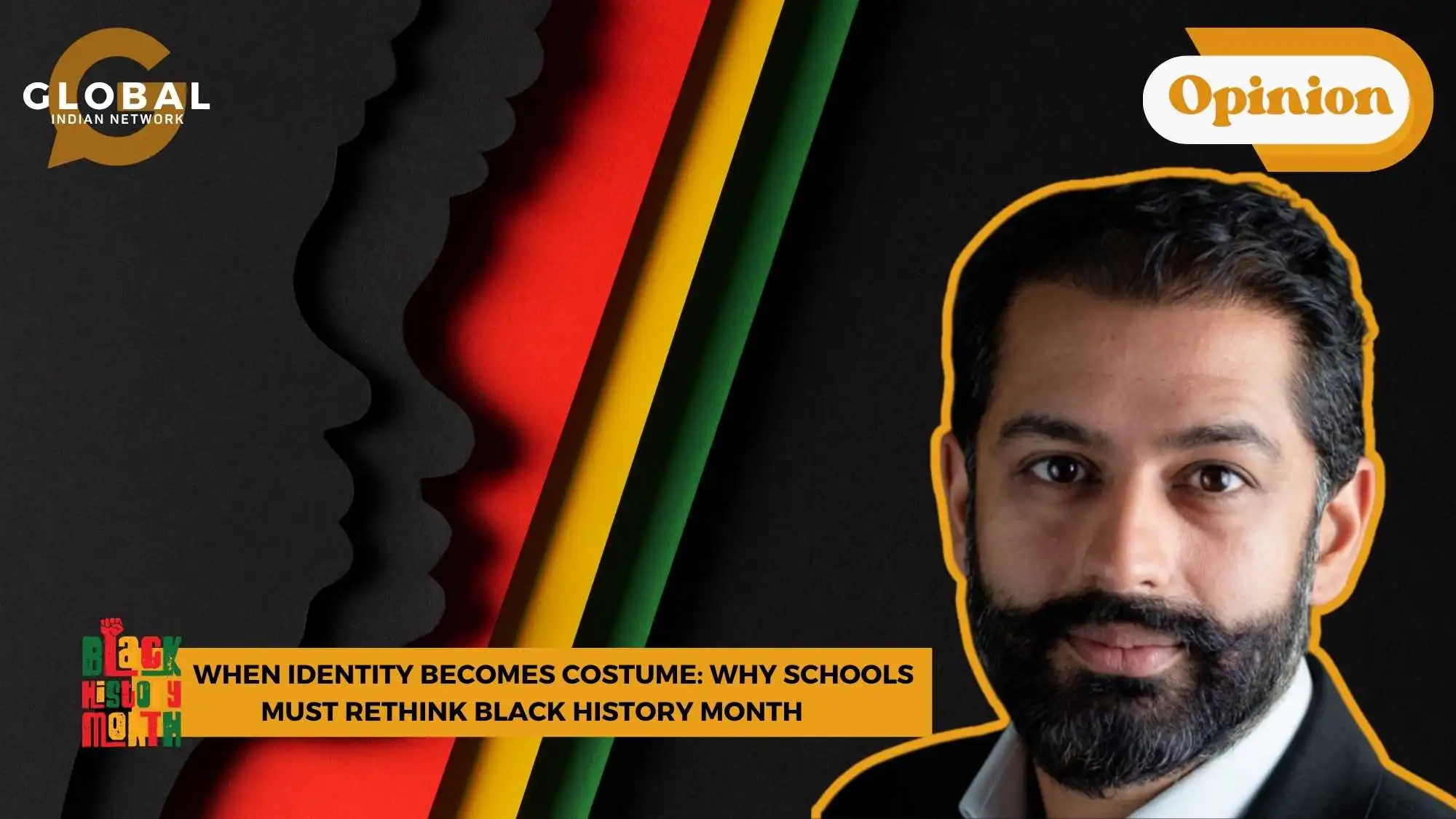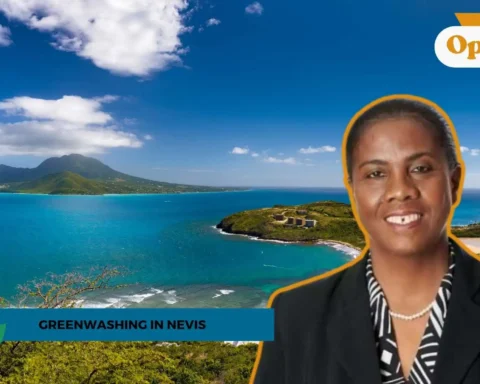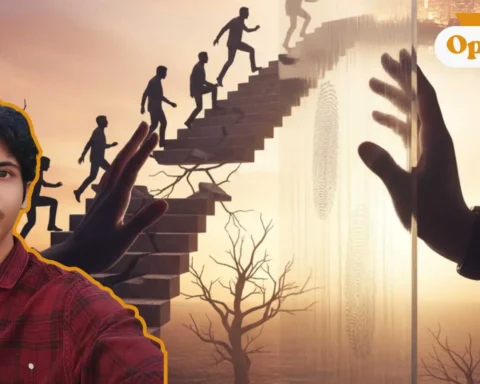This week, my daughter’s grammar school sent home a note celebrating Black History Month.
It read:
“As we continue Black History Month celebrations, the Equity Prefects are holding a Flag Fest Day this Friday. Students can wear their own clothes along with the colours of their African or Caribbean flag. For students who are not of African or Caribbean descent, they can wear their own clothes as well and choose any African or Caribbean flag based on their favourite celebrity, musician, sports player, friend, or public figure.”
At first glance, it seemed harmless, a celebration of culture, colour, and diversity. But as I stood there reading it, something inside me tightened, and no, it was not high cholesterol! It was because what I saw wasn’t a celebration. It felt like it was simplification. And it’s not just this one school, I’ve realised this is happening right across Britain.
It’s well-intentioned, yes, but it speaks to something deeper: our education system’s growing tendency to skim rather than study. We keep creating gestures of inclusion without teaching the depth that gives them meaning. As a nation, we need to go further, especially now, at a time when identity politics is rife and the very idea of Britishness is being tested.
When the flags of other nations rise alongside our own, we should be confident enough to ask why, and thoughtful enough to understand how these conversations about identity connect to who we are becoming as a people.
If British education is to prepare the next generation for a global world, it must stop performing diversity and start teaching it, not as spectacle, but as substance.
The Problem with Simplification
Africa is home to fifty-four countries with over a thousand languages. The Caribbean is a patchwork of islands shaped by centuries of Indigenous, African, Asian, and European influences. Yet for many, that invitation to “dress up” will translate to the same narrow clichés, a Jamaican flag, maybe a Mandela shirt.
The Caribbean is certainly not just Jamaica, and South Africa is not all of Africa.
These convenient reductions make us lazy, and worse, they teach our children that the world can be understood through costume, not context. We are teaching them that identity can be worn for a day and taken off just as easily. And then there’s the other question: what does “Black” even mean?
Why is the Caribbean grouped into it, but the United States, with its vast African diaspora and cultural impact, is often left out of the same framework? If we truly want to understand Black identity, shouldn’t we explore it as a global conversation rather than a regional checkbox?

The Trouble with Easy Labels
Here’s the real issue: schools across the UK have equated Black identity with Pan-African and Pan-Caribbean identity. It’s an easy shortcut, but also one of the greatest injustices to the rich complexity of both regions.
Take the Caribbean. To call it “Black” in totality is to erase entire histories. The Caribbean is not one story; it’s a world of intersecting ones, of Africans brought through the horrors of the transatlantic slave trade, the indentured workers from India and China who themselves endured tremendous suffering and deep exploitation, of Europeans who settled and intermixed, and of the Indigenous peoples who were there long before any of us.
In Guyana alone, there are nine recognised Amerindian nations: the Arawak (Lokono), Carib (Karinya), Wapishana, Arecuna, Akawaio, Patamona, Macushi, Wai Wai, and Warrau.
Their languages, cosmologies, and land rights form the invisible foundation of what we call “Caribbean history.” And yet, for some, these communities were wiped out entirely, victims of disease, displacement, and systematic erasure.
Their stories should not be footnotes to someone else’s narrative. They are part of the region’s soul, a living reminder of how easily culture disappears when identity is simplified and the Caribbean is grouped.
And then there’s Africa, a continent of over fifty nations, thousands of ethnic groups, and histories stretching back to the world’s first civilisations. To reduce this vastness into a single story of slavery and colonialism is not just lazy, it’s cruelly incomplete.

Conversations That Shaped My View
This isn’t just my frustration as a parent. It comes from years of conversations with people shaping these regions. On my podcast series, I sat down with President Yoweri Museveni of Uganda, where we discussed Pan-Africanism and how Africa’s identity must evolve beyond colonial definitions.
We’ve taken these discussions across the globe with Heads of State and leading minds across the Caribbean and Africa, always exploring one fundamental idea: how identity can be celebrated without being confined, whilst looking at the elephant in the room discussions.
These are not elite conversations. They are meant for parents, teachers, and students to encourage all of us to think more deeply about what identity truly means.
And what has become clear, time and again, is this: in the story of the Caribbean, like Africa, skin colour isn’t what defines people, it’s how they feel about the nations they call home.
The African entrepreneurs who have lived in Kenya, Malawi, or Mauritius for six generations may not be “Black,” but they are African.
Their belonging is rooted not in colour, but in shared nationhood.
Even within Africa, identity defies simplicity.
When we had paramount chiefs of the Khoisan community in South Africa on the show, they spoke passionately about how the idea of a single melanin-based “Black” identity can create more division than unity.
“How many shades do you go under?” one of them asked.
It was a powerful reminder that even within Africa, Blackness is not a singular experience.
When Good Intentions Go Wrong
Let’s be clear: the purpose of Black History Month is vital, if done properly. For too long, African, Indian, and Caribbean histories were silenced in the British curriculum. Entire generations grew up knowing about Churchill and the Tudors, but not Toussaint Louverture, Meles Zenawi of Ethiopia, or Cheddi Jagan of Guyana, figures who defined movements of freedom, identity, and environmental stewardship.
So yes, centring Black voices matters.
But centring should not mean flattening.
Pan-Africanism, that beautiful movement of solidarity led by Marcus Garvey and Kwame Nkrumah, and supported by leaders like Jagan (Guyana), was about unity of purpose, not sameness of identity.
It was a call for freedom, not for uniformity.
When schools blend Africa and the Caribbean into one interchangeable “Black” category, they turn solidarity into stereotype.
And when they reduce learning to a day of costumes and flags, they risk teaching children imitation instead of empathy.

A Better Way Forward
If we truly want to do justice to these regions, then let’s go deeper.
Imagine a Caribbean Month, one that explores the islands’ intertwined histories, their migration stories, their Indigenous roots, and the cultures that have shaped music, cuisine, and global thought.
Or an African Season of Education, where we take a deeper dive into the very fabric of Africa: the kingdoms, philosophies, tribes, and modern innovators who have influenced not just Africa, but the world.
And beyond that, let’s have dedicated seasons towards world history. Instead of equating Africa and the Caribbean together as a single identity, let’s create distinct subjects and periods of study: Caribbean history. African history. Southeast Asian history. Middle Eastern history.
Each deserves space to tell its story, to show the movement of people, and to explore how ideas, faiths, and cultures evolved across borders.
It’s not just about representation, it’s about relevance.
By teaching children the interwoven histories of civilisations, we also teach them the evolution of identity, how humanity has always been in motion, adapting, blending, and learning.
Frankly, I have a gripe with many of the governments across the Caribbean and Africa for not doing enough to preserve and promote their deeper historical narratives. But that’s all the more reason for Britain to help change the tide, not through control, but through curiosity.
Because the students of today deserve to surpass the divisions of the past, they deserve education that shows them not who they are told to be, but how they came to be and what connects them to others.
And perhaps one day, we might even see a global curriculum where every nation teaches not just its own story, but humanity’s story. I don’t know who the arbitrator for that would be; perhaps it’s wishful thinking, but if we truly want to create global citizens, that’s where education must head.
Because once we move beyond melanin and start examining history as the story of us, as civilisations, as humans told without fear or favour, then we are doing something worth backing.
Anything less risks becoming another performative exercise: a marketing moment for brands, a virtue signal for governments, and a feel-good gesture for the public, allowing people to believe they care, without truly knowing enough.

The Real Lesson
We need to teach our children that history is not a mirror of skin colour, it’s a map of shared experience. That Africa’s story did not begin with slavery, nor the Caribbean’s with colonisation.
That “Blackness” can hold pain, pride, and plurality, and that celebrating it means exploring its depth, not reducing it to a dress code.
I’m not against Black History Month.
I’m against what it has become: a comfortable tick-box exercise that lets institutions claim inclusion while avoiding introspection.
Let our schools be brave enough to teach the uncomfortable truths, the contradictions, the crossings of cultures that shaped us all.
Let’s replace performance with perspective.
Because our children deserve more than simplified stories.
They deserve the world as it truly is, complex, interconnected, and profoundly human.

Let us know your thoughts. If you have burning thoughts or opinions to express, please feel free to reach out to us at larra@globalindiannetwork.com.









